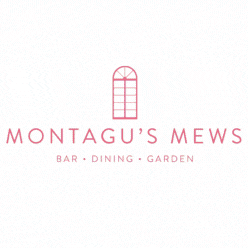In case you missed it see what’s in this section
Let's Talk
Fashion Museum Bath to Stage ‘Lace in Fashion’ Exhibition
The Fashion Museum Bath’s special exhibition for 2017 will be ‘Lace in Fashion’ (4 February 2017-1 January 2018).
Drawing on the riches of the museum’s collection, as well as generous loans from contemporary fashion designers, the exhibition will showcase over 50 exquisite pieces, showing how lace has been used in fashion from the time of Shakespeare to the present day.
The Exhibition Curator, Elly Summers, has been working painstakingly to catalogue the museum’s extensive collection of lace dating from the 1500s to the present day, supported by a grant from the Arts Council England and assisted by expert volunteers from the Lace Guild. This research has uncovered many gems from the collection – for example a lace dress made in 1805, which may be the only surviving dress worn by Queen Charlotte.
Global British luxury brand Burberry is loaning two looks from its Spring/Summer 2016 collections: a menswear look including a lace caban and shirt, and a womenswear look featuring a silk and lace dress. Other highlights will include a navy blue lace dress worn by Lea Seydoux in the James Bond film Spectre, which has been loaned to the museum by Australian design duo Lover, and a 1991 Karl Lagerfeld dress worn by 1990s supermodel Linda Evangelista in British Vogue, which celebrates its centenary in 2016.
Councillor Patrick Anketell-Jones (Conservative, Lansdown), Cabinet Member for Economic Development at Bath & North East Somerset Council, said: “‘Lace in Fashion’ will showcase some of the rarest and most beautiful pieces from the Fashion Museum collection, and explore the fascinating history of lace. We are delighted that fashion designers – from the UK to Australia – are supporting the Fashion Museum by generously lending pieces for the exhibition.”
The oldest object in the exhibition will be a smock dating from 1580-1600 with Flemish bobbin lace on the sleeves and collar, which is one of the earliest pieces in the Fashion Museum’s collection. Another of the museum’s rarest treasures will also appear in the show: a silver tissue dress made from fine silk woven with silver thread and trimmed with parchment lace, which dates from around 1660. This is a rare survival of parchment lace, a delicate fabric made using tiny strips of parchment or paper, wrapped in silk and incorporated into the design of the bobbin-made lace.
From the 1500s to 1700s, lace was a high-value fabric and a sign of prestige, mostly worn by royals and the aristocracy. There were two types of lace available – bobbin lace and needle lace, both of which were incredibly time consuming to produce, and required great levels of skill.
Mechanisation followed and by the end of the 1800s many people could afford to wear lace. New lace-making techniques appeared, including machine lace, chemical lace, tape lace and tatting. Examples of fashionable dress made using all of these techniques will be included in the show. Today, top designers such as Valentino and Alexander McQueen frequently use lace in their designs, and lace is popular in high street fashions.
The exhibition will look at the following themes:
- Luxury – exploring the development of lace making from the 1500s to 1700s, when lace was a high-value, luxury material
- Technique – covering the mechanisation of lace making over the course of the 1800s
- Everyday – featuring fashionable clothing from 1909 to the 1970s, when lace had become affordable for many people
- Couturiers – showcasing exclusive lace dresses made by couturiers for wealthy clients in the 1900s, including leading Parisian and British couturiers of the day
- Royal – including a 1805 dress that may have belonged to Queen Charlotte, and two dresses by leading British fashion designer Norman Hartnell, worn in the 1950s by Princess Margaret and the Queen Mother
- Celebrity – featuring a 1991 Karl Lagerfeld dress worn by one of the original supermodels of the 1990s, Linda Evangelista, in British Vogue, and a 2015 Venus dress worn by Lea Seydoux in the James Bond film Spectre
- Modern – revealing how today’s catwalk is challenging traditional concepts of lace in fashion, with fashion looks by Burberry, Alexander McQueen, Erdem and Christopher Kane
‘Lace in Fashion’ complements the Fashion Museum’s major exhibition, ‘A History of Fashion in 100 Objects’, which runs until 1 January 2019. Admission to both exhibitions is included in the Fashion Museum ticket.
Weather in Bath
Listings

















